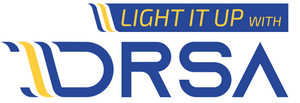Boat Steering Systems & Outfitting
Boat steering systems connect you to the water, providing safe and responsive control. You'll find mechanical options for smaller setups and hydraulic ones for high-power engines. We stock helms, cables, cylinders, wheels, and trim tabs from reputable brands such as Uflex and Seastar. These parts fit outboards, sterndrives, and inboards, helping you handle docking or offshore runs with ease. If your current system feels stiff or loose, it's time to upgrade for better performance and less fatigue.
Anatomy of Boat Steering Systems
Understand the parts to pick the right setup. Mechanical systems use cables for direct feel, while hydraulic ones rely on fluid for smooth power.
Mechanical Steering Components
- Helm: Converts wheel turns to cable movement. Choose rotary for compact spaces or rack-and-pinion for efficiency.
- Steering Cable: Push-pull wire in a jacket transfers force to the engine. Route it with minimal bends to avoid wear.
- Connection Kits: Brackets and arms link the cable to your outboard or sterndrive.
Hydraulic Steering Components
- Helm Pump: Pushes fluid through hoses when you turn the wheel.
- Steering Cylinder: Mounts on the engine to convert fluid pressure into motion. Options include front, side, or splashwell mounts.
- Hoses and Fluid: High-pressure lines carry fluid. Use recommended types to prevent leaks.
Choosing the Right Steering System
Match your boat's size, speed, and horsepower. Mechanical works for under 150 HP, hydraulic for higher power, and electronic for top integration.
Mechanical Steering
- Pros: Low cost, direct feedback, easy for small boats.
- Cons: High effort at speed, prone to corrosion without maintenance.
- Best For: Boats under 30 feet, up to 150 HP, like runabouts or pontoons.
Hydraulic Steering
- Pros: Low effort, handles high torque, corrosion-resistant.
- Cons: Higher cost, needs leak checks.
- Best For: Over 115 HP, larger vessels, long trips.
Electronic Power Steering (EPS)
- Pros: Effortless control, integrates with autopilots, variable ratios.
- Cons: Expensive, needs stable power.
- Best For: Multi-engine boats, luxury setups with joysticks.
Steering System Comparison
| Characteristic |
Mechanical |
Hydraulic |
Electronic (EPS) |
| Steering Effort |
High |
Very Low |
Effortless |
| Feedback Level |
High (Direct) |
Low (Dampened) |
None (Programmed) |
| Max HP |
Up to 150 |
No Limit |
No Limit |
| Initial Cost |
Low |
Medium |
High |
| Maintenance |
Medium (Grease Regularly) |
Low (Fluid Checks) |
Very Low (Electrical) |
| Ideal Boat Size |
Under 30 ft |
Over 25 ft |
Any, High-Performance |
| Key Advantage |
Simplicity & Cost |
Comfort & Power |
Integration & Control |
Sizing and Selecting Your System
Size based on HP, speed, and engine count. Over 150 HP? Go hydraulic for safety.
- Engine HP: Key factor hydraulic required above 115-150 HP to cut fatigue.
- Boat Speed/Size: High speeds need robust parts; multi-engines require tie bars.
- Use Case: Fishing or cruising? Pick low-effort for long days.
Measuring Mechanical Cables
- Replace: Measure jacket, add 18" for rotary or 30" for rack, round up to feet.
- New: Add paths A (helm to gunwale) + B (gunwale to transom) + C (transom to engine), adjust +6" or -6" by mount.
Measuring Hydraulic Hoses
- Replace: Measure end-to-end, round to even feet.
- New: A + B + C + 24" for service loop, round up.
Outfitting for Better Control
Add wheels, knobs, and tabs to improve handling.
Steering Wheels
- Materials: Stainless for saltwater, polyurethane for freshwater, wood for classics.
- Sizes: 13.5" for quick response, 15.5" for easier turns.
Power Knobs
- Benefits: One-hand spins for docking, frees hand for throttle.
- Check: Ensure clearance to avoid leg hits.
Trim Tabs
- How They Work: Adjust stern lift for planing, balance, and smoother rides.
- Benefits: Faster planing, corrects lists, cuts pounding in chop.
Advanced Marine Technologies
Step up with autopilots and joysticks for automation.
Autopilots
- Components: Sensor, computer, drive unit ties into steering.
- Benefits: Holds course, reduces fatigue, and fishing patterns like zig-zags.
Joystick Piloting
- How It Works: Controls engines for sideways moves or pivots.
- Benefits: Easy docking, station-keeping holds position.
Maintenance and Troubleshooting
Keep systems reliable with checks. Mechanical needs grease; hydraulic needs fluid watches.
Routine Checks
- Mechanical: Inspect cable yearly, grease tilt tube.
- Hydraulic: Check fluid before outings, inspect hoses annually.
Common Issues
- Stiff Steering: Lube mechanical; bleed air in hydraulic.
- Loose Steering: Tighten bolts; check seals.
- Wandering: Align the system or fix the play.
Why choose our steering systems? They deliver safe, responsive control that fits your boat's needs. Customers report easier handling and fewer issues after upgrades. We carry durable parts that last in marine conditions.
Upgrade your system with marine-grade reliability. Shop now at DRSA.com.

















